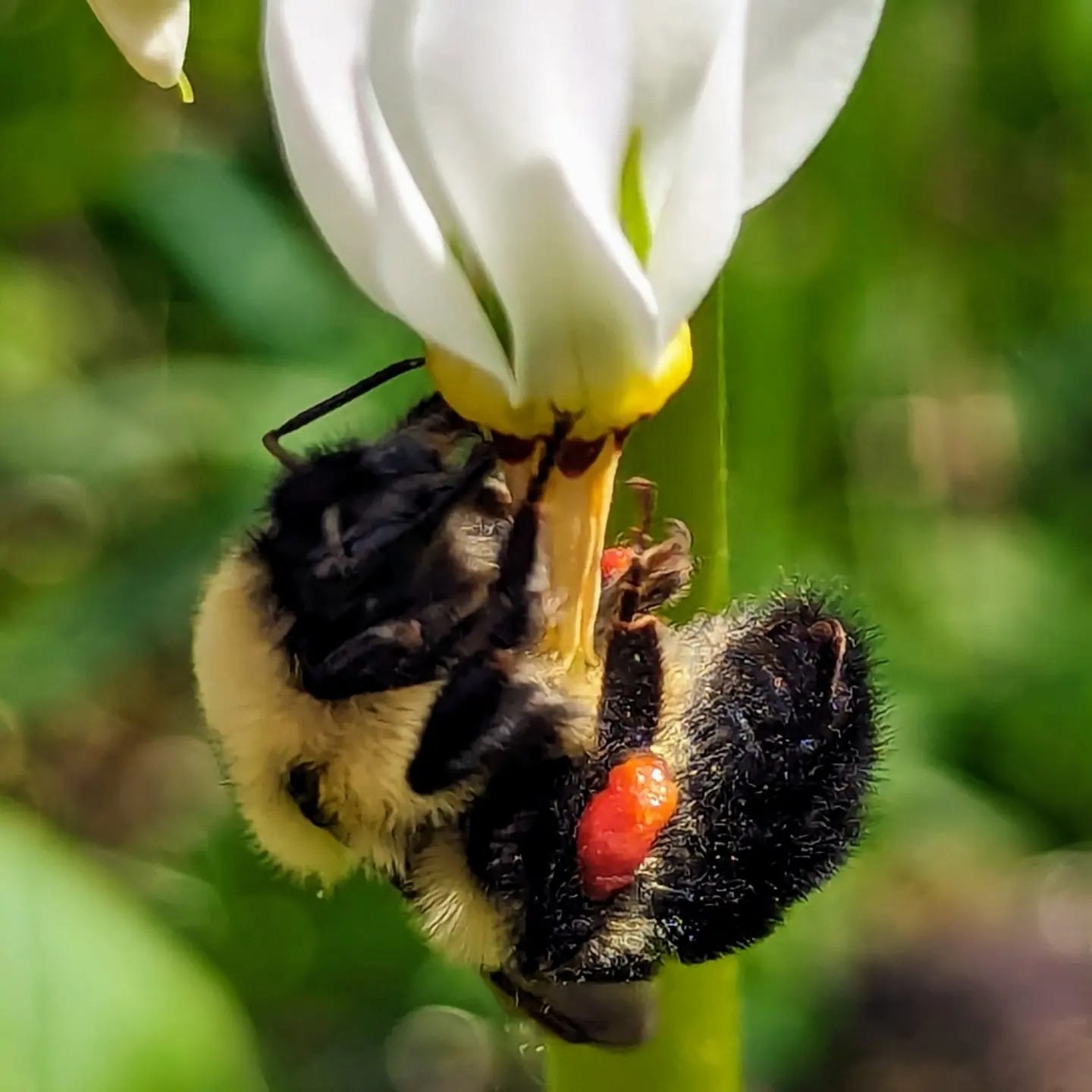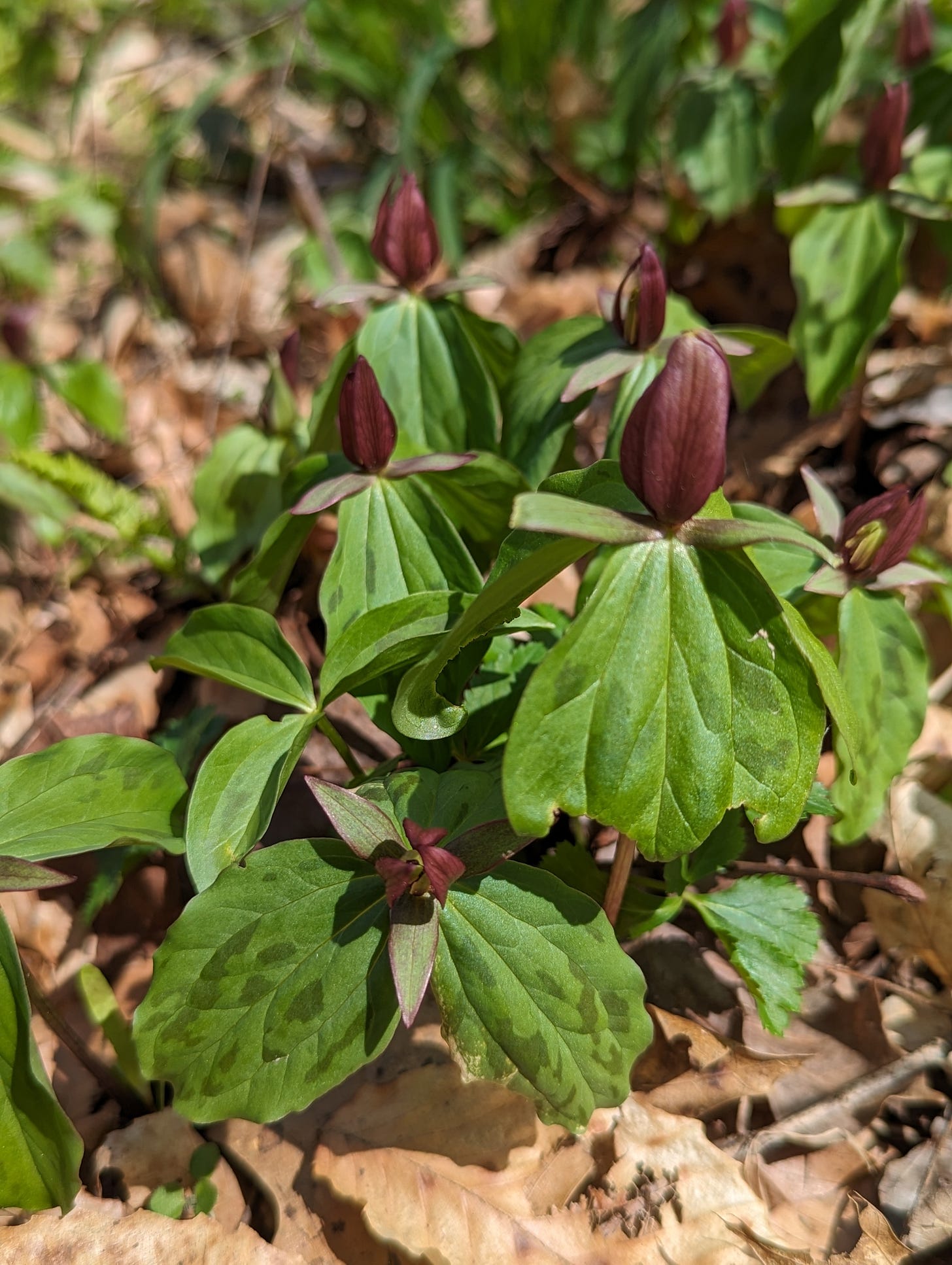The black vultures are at about the halfway point of brooding their two eggs. I anticipate hatching around April 17-19th. With the trail cam inside the barn, I've been fascinated to see how often they move the eggs…several times per hour, day and night.
Shift change for the adults is consistent every day between 10-11 am. Though on these warmer days, sometimes the change is earlier. Whatever the exact time, it's quick! The two birds may spend a minute, usually less, together in the barn. Then the adult being relieved for the next 24 hours hop-flies to the barn door, then the nearby tree like in this video, before flying off.
Meanwhile, the pollinators are hard at work.
Ephemerals keep up their show. A spectacular limited engagement.
Trails lined with Virginia Bluebells and bunches of trillium.
A blanket of mini ferns.
And a nurse log only nature could create filled with wild violets and trailing vines sprinkled with the tiniest white flowers.
Across Tennessee, the redbuds are at their peak! I hope to catch more images before the lush lavender blooms vanish until next year. To me, redbuds are the closest thing the South has to the lilacs I loved growing up in the Midwest…at least visually.
In my garden, a surprise!
Every step along the trail, a wonder.
Take a little time every day to notice.
The wonder and magic of nature is everywhere.
Thank you for reading and joining me on this journey. If you enjoyed this week's photo essay or another post, I hope you may tap the heart, share with a friend, or leave a comment.
Let's fill this world with positivity and beauty!



















I miss northern Lilac bushes too, but there are a few that will grow here, albeit a bit smaller overall (both the flowers and whole shrub)!
I grow Boomerang Reblooming and the trick I’ve learned is that it actually does well with a bit of shade, so ours is growing just on the edge of the woods. Miss Kim grows here as well.
So lovely! I'm in northern California and the Trillium is going off here now too. We also have a red bud, still in buds, and I wonder if it's the same plant, or just a common name shared by two different ones.
Do you know what kind of moth that is?